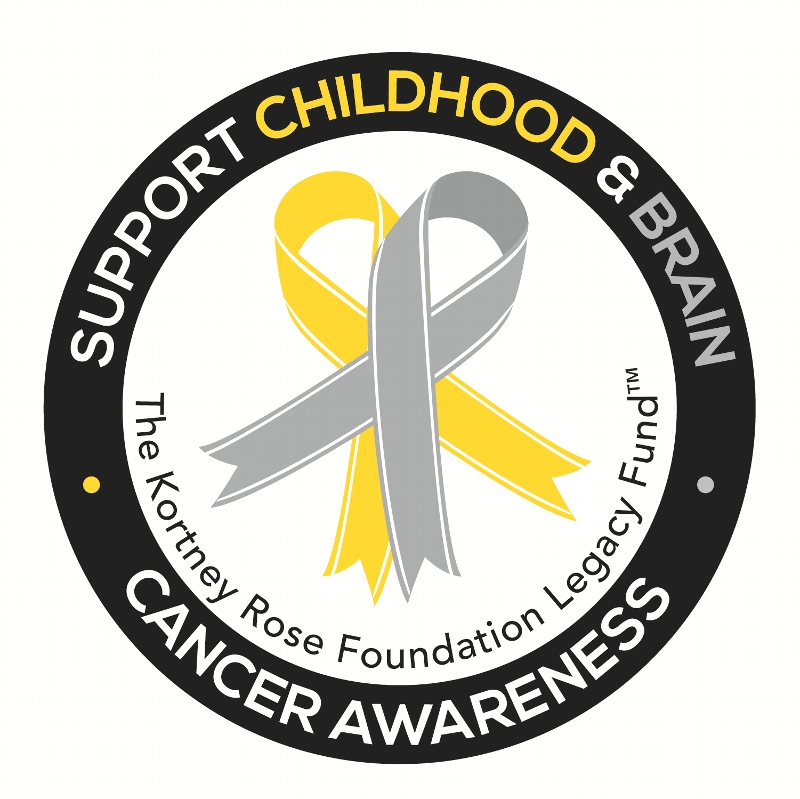
Help Us Launch...
Thank you for being a part of our donor family for the past 16 years of The Kortney Rose Foundation (KRF). Together we have truly changed the landscape of pediatric brain cancer research. Our cumulative donations of more than $2.8 million have advanced pediatric brain tumor research by helping to create the Children's Brain Tumor Network (CBTN), a global consortium of hospitals and research institutions, and also supporting the growth of the pediatric Neuro-Oncology Program of the Children's Hospital of Philadelphia (CHOP). Click here to see KRF's history timeline.
In 2006, at nine years old, Kortney was diagnosed with Diffuse Intrinsic Pontine Glioma (DIPG) in her brain stem and passed away less than five months later as she was enjoying third grade at Wolf Hill Elementary School in Oceanport, NJ. She had an unparalleled zest for life. Kortney was a daredevil with little fear, a spitfire who knew how to get her way and she brightened any room with her smile and laughter.


On November 27, 2021 Kortney would be turning 25 years old and her spirit continues to inspire today. Together we've built a wonderful legacy in Kortney's name. Now sixteen years after the foundation's start, a new chapter has begun with the creation of the Kortney Rose Foundation Legacy Fund. Donations continue to support our mission of funding pediatric brain tumor research through the CBTN.

The KRF was a founding partner of the CBTN, which drives innovative discoveries, pioneers new treatments, and accelerates open science to improve the health of every child and young adult diagnosed with a brain tumor. What began with four U.S. institutions collaborating and sharing data, is now a network of pediatric institutions, researchers, foundation partners, corporate partners, patients, and families. Any research anywhere may access this largest collection of pediatric brain tumor data on earth, at no cost. This information is vital for researchers, and the support of the Legacy Fund will continue to help advance this research.

Images and facts courtesy of - https://cac2.org/interest-groups/childhood-cancer-fact-library/
Less than 4% of the federal government's annual cancer research budget is applied to all childhood cancers. That's right, 96% of the funding goes to adult cancers. There have only been six drugs that were approved in the first instance for use in cancer treatment for children, while there have been hundreds of drugs approved for adult cancers. We need your help to bridge this large gap.
Brain and Central Nervous System (CNS) tumors are the most common cause of disease related death in children aged 0-19 years in the U.S. and across the globe with approximately 412,000 children and young adults living with a brain tumor each year. There are 70 life years lost on average when a child dies of cancer compared to 15 potential life years lost for adults. *The median age of death in children is only nine.
We have put people on the moon and explored space since Neil Armstrong's daughter, Karen, died of the same kind of brain tumor in 1962, but in all of that time there have been no discoveries made to help with the survival of this tumor. Every case was terminal in 1962 and continues to be today. Research is expensive and takes time to yield results, but we must invest in our children.
Please help us change these facts with a birthday gift in honor of Kortney's birthday of $25, $125, $250, $525, $1,025, $2,500 or any amount to kick off the Kortney Rose Foundation Legacy Fund.
DONATE
to Help Get Brain Tumors Off Kids' Minds.
According to the CHOP/CBTN, "As childhood brain tumors are not common enough for any single research center to encounter enough patients with the same diagnosis to gather the amount of samples or data needed to conduct substantive research, collaborations like CBTN play a crucial role in advancing the pace of progress. The more data available to researchers, the higher the potential for novel insights that lead to breakthroughs in treatment."


Get The Word Out
https://chop.donordrive.com/campaign/Kortney-Rose-Foundation-Legacy-Fund